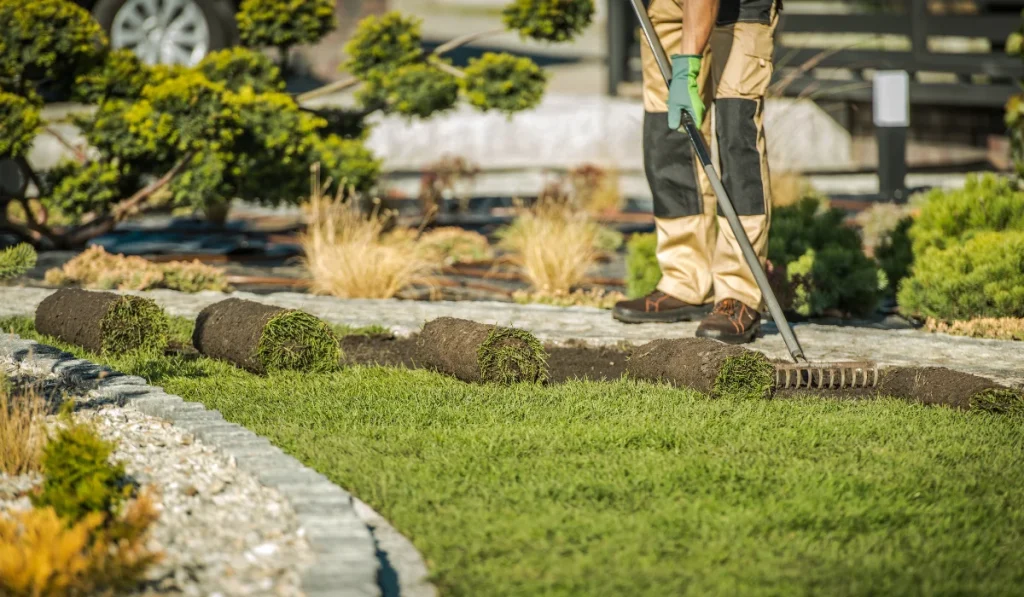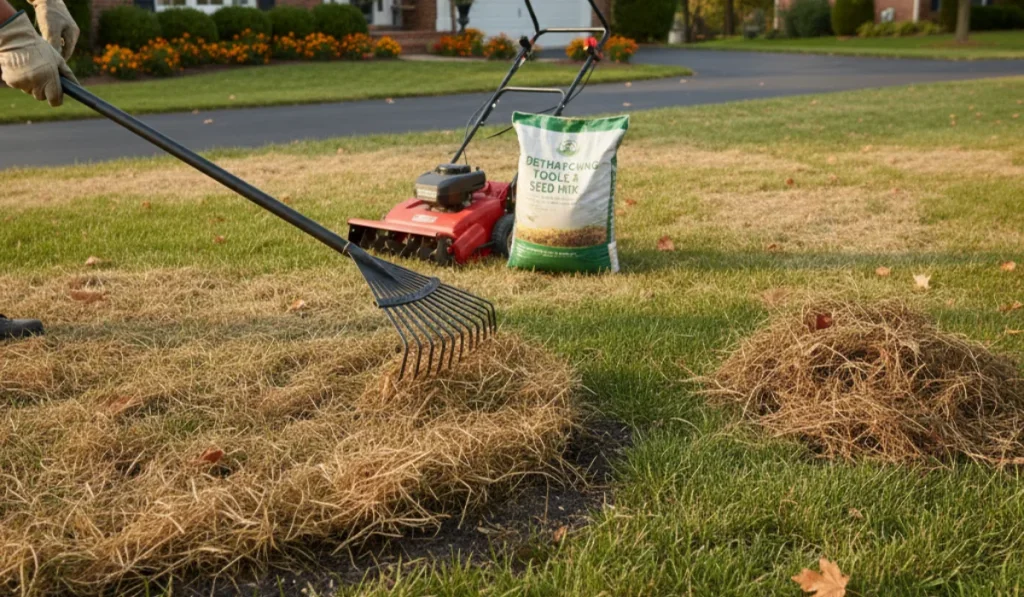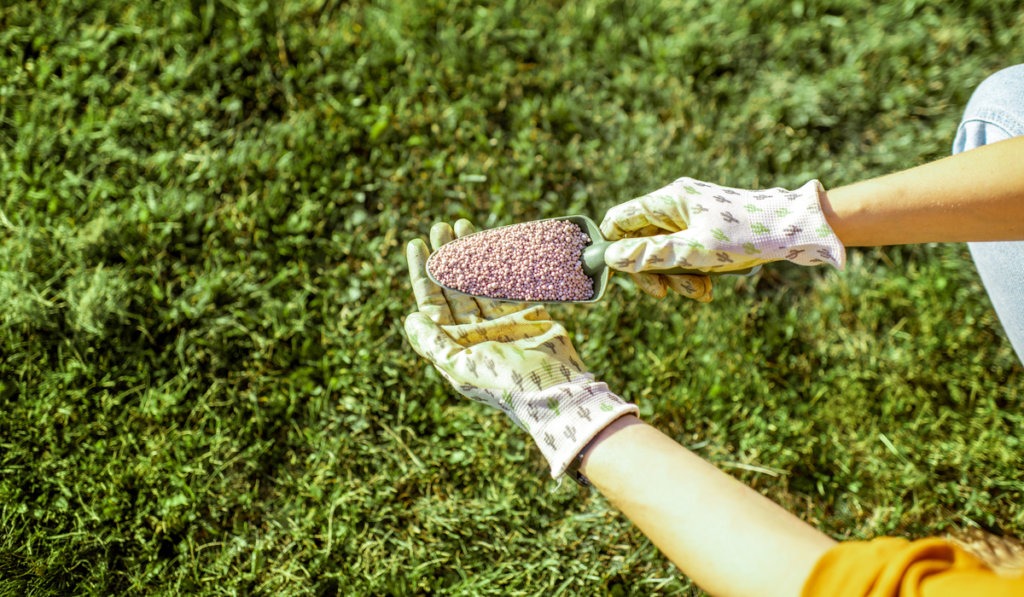Laying sod is one of the fastest and most effective ways to get a lush lawn in California. Getting a great lawn in California takes good timing, healthy soil, and smart watering, given the state’s diverse weather conditions. Doing the job yourself? Hiring a crew? Either way, it helps to know what to expect. That way, your lawn has a better chance of staying healthy.
From prepping the soil, delivery, to caring for your newly laid sod, after installation, here’s what you can expect:
Key Takeaways:
- Start with good prep. Test your soil, clear out old grass, and level the ground. These steps help your new lawn grow strong.
- Same-day installation is crucial. Lay sod the same day it’s delivered to avoid drying out or overheating on the pallet.
- Watering is key. For the first 7–10 days, water lightly a few times a day to help the roots grow.
- Mowing timing is essential: Wait until your sod is firmly rooted before mowing, and only remove one-third of the grass height during the first cut.
Before the sod arrives: prep work is everything
Start with a soil test
Before laying sod, it’s essential to understand what you’re working with. A simple soil test reveals your soil pH and whether you need to add organic matter or other amendments. Most lawns in California benefit from improving topsoil with compost to boost drainage and nutrient retention.
Remove existing grass
If you’re replacing an existing lawn, you’ll need to remove the old grass completely. A sod cutter works well for this. Clear out all debris, roots, and weeds. For tougher areas, some homeowners opt to use an herbicide, though SodLawn recommends using organic methods when possible.
Level and loosen the soil
Loosen the top 4 to 6 inches of soil using a rototiller to break up hard spots, helping the roots grow better. Also, check for low spots and smooth the soil surface with a rake or lawn roller.
Pro tip: Don’t skip checking sprinkler heads. Make sure they’re flush with the soil and properly spaced to avoid overwatering or missed zones.
Delivery day: how sod is shipped and laid
What comes on a pallet?
Sod is delivered fresh from sod farms. They usually come in rectangular pieces stacked on a pallet. Each pallet typically covers about 480-600 square feet, depending on the type of sod and cut.
For best results, lay the sod on the same day it’s delivered to prevent it from drying out or overheating.
Laying sod like a pro
Start by laying sod along the longest straight edge, like a driveway or walkway. Stagger each row of sod like bricks and press edges tightly together to avoid gaps. Avoid stretching or overlapping pieces of sod.
Roll over the sod after laying it to push out air pockets and help it stick to the ground. You can also use a knife to cut sod to fit around curves.
Aftercare: first weeks with your new lawn
Watering newly installed sod
The first few weeks after laying new sod are crucial. You need to water the sod regularly to help the roots grow. However, make sure you’re only keeping your newly installed sod moist. Don’t soak it. Too much water can damage the sod. Most homeowners should water lightly 2–4 times per day for the first 7–10 days.
Once roots begin to establish, you can water less often but more deeply. Eventually, 1 inch of water per week will be enough. Make sure to monitor sod in areas near walkways, driveways, or slopes, as they tend to dry out faster.
When to mow
Don’t mow until the sod is firmly rooted. You can test this by gently tugging on a piece. If it resists, it’s ready, usually around 14 days in spring and summer, and 14–21 days in cooler months, depending on conditions.
Start with a light mow, removing no more than one-third of the grass height. Use a sharp lawn mower blade and avoid making tight turns that can lift new sod.
Whether you’re using a rotary mower or a reel mower, keep the blades clean and avoid mowing when the lawn is wet.
Long-term lawn care tips
After your sod establishes, shift your focus to regular lawn care:
- Fertilize 6-8 weeks after installation with a balanced starter fertilizer.
- Aerate once a year to break up soil compaction.
- Check your sprinkler system each season to ensure even water coverage.
- Adjust mowing height depending on the season and grass type. For cool-season lawns like fescue, keep it slightly taller in summer.
Whether you’ve laid turfgrass like TifTuf or another variety, consistent care will help you maintain a healthy lawn year-round.
Final thoughts
Installing a sod lawn is one of the quickest ways to transform your yard. But the sod installation process doesn’t end once the last piece is down. From prepping the soil and adjusting your sprinklers to knowing when to mow, each step plays a role in helping your new sod thrive.
If you’re planning a sod project in California, whether in the Central Valley, coastal areas, or SoCal suburbs, give your lawn the best start by understanding the process and giving it the proper care from day one.
At SodLawn, we’ve been delivering top-quality sod and expert service since 1981. From fast, fresh delivery to friendly support before and after your order, we’re here to help you achieve your lawn project. With a 2-3 hour delivery window and sod harvested fresh within 24 hours, you’ll get the green you want, on time.
Contact us today, and our sod experts will help you every step of the way towards your dream lawn.
Frequently asked questions
How long does it take to install sod?
Most lawns take one day to install after prep. For beginners, about 200–500 square feet can be installed per hour. The average person can do 300–500 sq ft/hr, while a skilled installer may handle even more. Larger or more complex yards may take longer, depending on the site and crew size.
Is sod installation a DIY job?
Yes, for small lawns. For bigger projects or uneven terrain, hiring a professional saves time and ensures even installation.
What’s the best time to lay sod in California?
Late spring and early fall are ideal. These seasons give the sod the right balance of warmth and moisture to establish roots.
Realistic Sod Installation Speeds
| Crew Size | Easy Site | Average Site | Tough Site |
|---|---|---|---|
| 1 person | 500 sq ft/hr | 300 sq ft/hr | 150 sq ft/hr |
| 2 people | 1,000 sq ft/hr | 600 sq ft/hr | 300 sq ft/hr |
| 3–4 people | 1,500–2,000 sq ft/hr | 900–1,200 sq ft/hr | 500–800 sq ft/hr |



